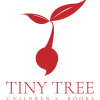
Are you aspiring to be a children’s book author? Do you want to make sure your manuscript stands out from the pack and captures the minds of young readers? Look no further!
In this blog post, we’ll share tips on how to polish your children’s book manuscript to perfection, ready to submit to a publisher like Tiny Tree! From character development to story structure and how to handle illustrations, these tips will help you elevate your writing to create a children’s book that will grab the attention of young readers and publishers alike.
Know Your Audience
It sounds obvious at first, but it’s crucial that you know your target audience and tailor your writing accordingly. All too often we receive submissions for books where the language or storytelling doesn’t match up with what a prospective author is telling us about the book.
Consider how age-appropriate your language is and the themes that make up your story. You might have a great idea, but pitching it to the right reader is so important. An editor or beta reader can keep you on track and help steer you toward the right audience, but we’ll talk about them later!
Try this: Imagine the book you’re writing is a picture book for toddlers. Tell your story using simple language, short sentences, and a playful scenario that will engage their imagination.
Create Memorable Characters
Characters are the heart of any story, and children’s books are no exception. Creating memorable characters isn’t easy, but creating a character that readers can connect with and want to root for is vital.
Think about their personality: What makes this character unique? What are their motivations? How do they feel in any given situation? Think about your target audience too. Would they know someone like this character? Would they like or dislike them? Answer these questions and you’re well on your way to creating a character that feels like they could jump off the page.
Try this: Create a character profile for your main character. Write down their name, age, appearance, personality traits, and motivations. Consider how your target audience will relate to and/or be inspired by your character.
Craft Engaging Storylines
Once you’ve got your memorable characters, you need something compelling for them to do. Children’s books often follow a precise structure with a well-defined beginning, middle, and end, so map out a basic storyline first and then fill in the gaps.
You want to create an engaging storyline that really resonates with your target audience. Use descriptive language to paint an image in your readers’ heads and let them see themselves in that world. Think about the consequences for each action: “and then” just drags out the story — tell your readers what the repercussions are for your characters after every new story beat.
Try this: Outline the plot of your children’s book, including the main events and emotional arc of the story, before you start writing. You could even write them down on sticky notes so you can move them around easily. Consider the pacing of the book: you don’t want to have too much going on at the beginning and end with nothing happening in the middle!
Edit Your Work
Just like any other type of writing, going back and editing your work is crucial for improving your children’s book manuscript and preparing it for submission.
Once you’ve finished writing, take a break for a few days and return to your work with fresh eyes. Read through your manuscript and think about your spelling grammar and punctuation — getting the basics right is so important! — and also read it for clarity to make sure it makes sense.
If you’re writing a shorter book (i.e. a 32-page picture book) this can be easier than if you’re trying to edit a 15,000-word novel. It may be worth considering asking for feedback from Beta readers. Beta readers are people who read and provide feedback on a manuscript or written work before it is published or submitted for publication. They typically represent the target audience for the manuscript and provide valuable insights from the perspective of a potential reader. They could be friends, family, or even other authors who write in your genre.
Try this: Read your work aloud. You’ll be surprised at how different it sounds out loud than it does in your head; you might catch any awkward phrasing, errors, or inconsistencies too.
Think About Illustrations
Children’s books can be very visual, especially those aimed at really young readers. In this case, a good story is one thing but illustrations will really captivate them. As children get older, illustrations in books are less prominent. However, having one or two (or even a cover illustration) is fairly common.
When writing your manuscript, consider writing small notes about what else is happening in the scene. This will help when working with an illustrator to put the final version of the book together. Also, don’t worry about illustrations until after submitting your book. If you have illustrations or have worked with an illustrator, that’s great. However, some publishers will want to use their own Illustrator so it’s best to submit your text first.
Try this: As you’re writing your manuscript (or afterwards when editing) consider how illustrations could complement and enhance your words text to create an immersive reading experience or draw readers into your world.
Test It Out With Young Readers
Whilst lots of us read children’s books — and we firmly believe children’s books are for everyone — it’s good practice to ask younger readers to give you some feedback on your work.
Trust us: children are some of the harshest critics. Test your manuscript with your target audience, either by reading it aloud to them or by giving them a copy to read on their own. Look for their reactions or ask them to write down what they think of the book. You can use this feedback to make any changes — just make sure to share the book with a few different readers.
Try this: Read your manuscript to a group of children in your target age range and observe their reactions. Do they laugh at the funny bits? Are they interested in the story? Take note of their feedback and make necessary changes.
Think About Themes and Messages
Children’s books are often written to convey important messages or discuss larger themes that may impact young readers. Whilst they might be works of fiction, stories can leave an impression on young minds.
Choose your themes wisely and be sure to reinforce positive messages throughout the story. Be mindful of sensitive topics and approach them with care and sensitivity.
Try this: Think about the themes and messages in your children’s book. Be conscious of how they might affect young readers. Does the message of your book align with the values you want to put across? Make necessary changes to ensure your story sends the right message.
Marketing and Promotion
You might not think it’s too important to think about the marketing and promotion for your book at this stage — and to a degree you’re right — but writing a great story is just the first step when it comes to being an author. A publisher may even ask you about where you see your book in the market or ask you about other books that are similar to yours.
Try This: Go online (or visit your local bookshop) and make a list of all the other books that are similar to your book: Do they have a similar setting or characters, perhaps? Are they aimed at the same audience?
Stay Persistent and Keep Learning
Once you’ve written your book, getting that book published can be a challenge. It’s important to be persistent, to keep learning about the industry and your niche, and be open to feedback about your work. Only by doing this will you keep improving your skills.
Do your best to stay up-to-date on the children’s book market, and keep your eye out for opportunities to share your work with readers and publishers alike.
Try this: Set realistic goals for your children’s book. Becoming a best-seller overnight is far from the norm. Set goals about getting published, how many books you want to sell, and maybe if you want to write any more books is a good place to start.
Writing a children’s book can be incredibly rewarding, but it’s a challenging process, especially for new authors. By following these tips, you can improve your manuscript and create a spellbinding children’s book that will have publishers begging to work with you. Who knows, maybe your work will inspire a whole new generation of readers?
So, what are you waiting for? Get to work on your next children’s book manuscript and start the journey to sharing your story with the world!

